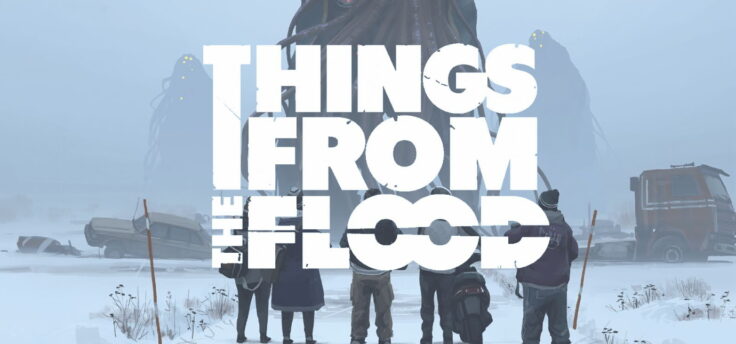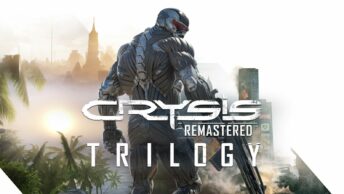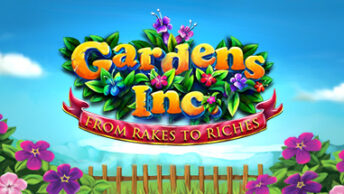The Loop universe just got a lot darker
Free League
Genre: Tabletop RPG
Developer: Free League Publishing
Publisher: Free League Publishing
Release date: 31 May, 2019


Tales from the Loop was a real hit when it was released in 2017, and managed to win several prestigious awards, including 5 gold ENnies, among which were “best game” and “best art”. The game was based on the amazing art by Simon Stålenhag, who with his art had managed to create depiction of the 80’s that was both fantastical and mundane at the same time.
Things from the Flood is a direct sequel to Tales from the Loop, and is set in the 90’s. The kids are now teenagers, and the world is falling apart around them. The tone is now darker and what once seemed like a bit of childish fun is now unsettling and scary. Things from the Flood is an investigation focused RPG set in a world that’s almost like our own

The Setting
In the 50’s the world’s first particle accelerator was built under Boulder City in Nevada, close to the Hoover dam and Las Vegas. This was a massive undertaking, and nobody not connected to the project fully knew the full extent of what was going on, and what was being researched there, but the project attracted some of the brightest minds from all across the United States and beyond. In the 60’s Sweden would build an even larger particle accelerator under Ekerö Municipality in Lake Mälaren, just outside of Stockholm. How a small country like Sweden, whom had just around 7.5 million inhabitants at that time, could afford a particle accelerator of that size unclear, but this particle accelerator, just like its US counterpart, would end up bringing in some of the brightest minds to work on cutting edge research. Meanwhile the USSR had found a way of harnessing the earth’s magnetic field to create flying crafts that were far more efficient than anything that came before it and could carry large amount of cargo. They might have been slower than airplanes, but it was still groundbreaking technology and would in the coming decades see widespread use across the northern hemisphere. In Japan they were able to create the first self-balancing robots, which would soon find use all over the world, in a number of different areas, everything from agriculture to defense.

A lot of what was going on with the particle accelerators, or loops as they would be called, ended up being classified, but people living in the areas around them started reporting strange events. Creatures from different time periods appeared, robots were acting weird and all manner of events happened. Most of this could never be verified, and would remain in the realm of fodder for the tabloids at best. The loops were still seen as a force for good, something that would help advance humanity’s understanding of the world, and any reports of wrongdoings could easily be brushed off as if not outright fabrications then at least overexaggerations.
Everything came crashing down in the 90’s. It happened in Sweden first, brown sludge would flood the loop, appearing out of seemingly nowhere, and a lot of that sludge would flood up to the surface. The people who had been living over the loop had to be evacuated as their homes were ruined and the roads became unsafe. Not long thereafter the same thing happened under Boulder City culminating in the Hoover dam collapsing. If the collapse was caused by the events surrounding the loop is still unclear, but much like in Sweden large areas became uninhabitable. These areas are considered off limit to anyone who does not have official business there.
If that was not bad enough, many machines started showing weird fleshy growths. This phenomena was dubbed the “machine cancer”, and it resulted in the destruction of a lot of machines. The exact cause of the machine cancer could not be determined, but some point their fingers at KRAFTA, the Swedish corporation who were tasked with cleaning up around the loop and recover any data. Others have even more outlandish ideas, like this being some kind of space virus. No matter the cause though, the machine cancer keeps spreading.
In Russia, after the turmoil caused by the fall of the soviet union, a group of robots declare independence. They view themselves as living being who deserve the right to govern themselves. Their declaration of independence is met by force, and the surviving robots flee from Russia and hide where they can, forming small enclaves.
But despite all of these events, the 90’s was still the 90’s. For the first time ever Dungeons & Dragons is dethroned as the top-selling RPG and the top spot is taken by Vampire: The Masquerade, Smells like Teen Spirit by Nirvana is still a smash hit and helps make sure that grunge is the sound of the first half of the 90’s and every kid wants a Super Nintendo or a Sega Mega Drive/Genesis. With the release of Windows 3.0 and later Windows 95 Microsoft firmly cements its operating systems as THE operating systems for home computers. And after the success of the Lion King Elton John’s “Can you feel the love tonight” gets played on radio non-stop. The 90’s is in other words still the 90’s we remember.
The Rules
Much like Tales from the Loop before it Things from the Flood uses a simplified version of the Year Zero engine. The rules in Things from the Flood are in fact almost the same as those in Tales from the Loop, though there are a few notable additions.

The Year Zero Engine is a dice pool system where, when you’re performing a task, you roll a number of 6-sided dice equal to your characters skill and associated attribute and any roll of a six is a success. Most tests only requires one success but exceptionally difficult ones might requires more. Any additional successes can then be used to buy additional effects depending on the skill being used. What sets the Year Zero engine apart from other dice pool systems is that if you’re not happy with a roll you can choose to “push” it. When pushing a roll you re-roll all dice that did not come up as a six, but you also take a condition.
Conditions are this games counterpart to damage, and represents bad things that happens to a character. Not all conditions are physical, they can also mean that the character is exhausted or scared. Each condition suffered incurs a -1 die penalty on all future dice rolls. If a character suffers more than 4 conditions it’s considered broken, and can’t perform any tasks that requires skill rolls until they’ve had time to rest and recover. Being broken is also bad because a character that becomes broken will also get a scar. This is some kind of long-term effect like a physical or mental trauma that won’t heal easily. Every time a character develops a scar there’s also a risk that they’ll become unplayable, either because they’re dead or so gravely injured that they can’t recover, or because their mind can’t take it anymore. The more scars a character has suffered the higher the chance is that they’ll no longer be playable when they suffer a new one. This is in stark contrast with Tales from the Loop, where the characters were effectively immortal.
The rules in Things from the Flood are very light, and easy to teach. Being so light does mean that a GM gets a bit less support from the rules though, and that can for some be overwhelming, as they can’t lean on the rules to making the game exciting, unlike say D&D. If this is a good or a bad thing really comes down to personal preference. There are also no real combat rules to speak of in Things from the Flood, which might seem odd, but helps reinforce that this is not a game about fighting but rather about teenagers solving mysteries.
The Characters
All the player characters in Things from the Flood are teenagers ages 14-19, living regular lives in a small community near one of the loops. Life is, for the most part, dull and mundane. But weird things are happening and the adults are too out of touch or too pre-occupied with other things to notice.

Creating a character is simple. The first thing you do is select an archetype, and these are the typical ones you would see in a high school movie, like the snob, the rocker, the party animal, the hacker and the lone wolf. Each archetype comes with three related “key skills”. There are 4 attributes, body, tech, heart and mind, and you’ve got 14 points to allocate between them, with the lowest allowed being 1 and the highest 5. Each attribute also has three associated skills, like tinker (tech), sneak (body) and charm (heart). You’ve got a number of skill points to assign to these, and any key skills can be raised to three, while any non-key skills can only be raised to one at character creation. It would be very easy to come up with new archetypes, as beyond the key skills there’s nothing mechanically that sets them apart. You could also pretty easily transfer characters from Tales from the Loop to Things from the Flood. There’s no actual rules for how to transfer a character from one game to the other, but it would not be hard to do.
Each character is also given an iconic item, something that’s special to them and represents who they are. Someone who wants to be a bit of a trouble maker could very well have a skateboard they take good care of, while a vain character could always carry around a makeup kit, it’s really up to each player to decide what their iconic item is, but it can be used in an appropriate situation to give you a boost. Said makeup kit could for an example help with a charm roll, or the skateboard could help someone get away at high speed on a flat road.
A character is more defined by what motivates them to do what they do, and their relationships to others, than by their stats in Things from the Flood, and a fare bit of space is given to detail how this works, and the rare few times it might have some kind of mechanical impact.
Just because this is a more narrative driven game does not mean that there’s no character progression though. Experience points is earned at the end of sessions, which can be used to increase the skills of a character. At the end of a session or an adventure a character might also change, their relationship are altered and they might even re-evaluate who they are and so very few things about a character is set in stone. Even their iconic item might become something else, to reflect this growth.
The Adventures and Other Related Things
Things from the Flood comes with a 4 adventure long campaign that takes up a good chunk of the book. Each adventure can be ran independently, though the fourth one might require a bit more work to do so. The adventures themselves are not too long, and each one can, in theory, be done in a single 4-5h session, though most groups will likely take longer (my group took 2-3 sessions per adventure). It feels like the adventures were written with the Swedish location in mind first and foremost, and the US location mentions were added after the fact.

The adventures do a good job at showing what kind of things can be done with Things from the Flood, and are easy to run and modify. There’s also enough support in the adventures for someone who’s not an experienced GM that they would probably not be too hard to do either. Some parts of the adventures can get pretty dark though, and they deal with things that could potentially hit close to home for some people, so a GM might want to keep that in mind when running these and keep an eye on how their players react.
Apart from the full adventures there are also some plot hooks and plot suggestions that are almost fleshed out enough to be full adventures on their own. For an RPG with a unique setting like Things from the Flood that’s a very nice inclusion as it could otherwise be pretty hard to figure out where to even start with a game like this.

Art, Layout and Quality
The art by Simon Stålenhag is, as always, amazing, and this book has a lot of it. Anyone who’s just experienced with Tales from the Loop might be shocked by how disturbing some of it can be in this book. It’s not on the level of say Kult, but it is decidedly darker than Tales from the Loop. There’s some additional art that’s simpler in nature than the art by Simon, but it still fits in well. The print quality does justice to the art, and is also of a very high quality.
Finding what you need in the book is easy. Rules light games have a pretty big edge over more crunchy games here, because there are so few pages that actually contain rules, but the layout is logical and finding the appropriate information is for the most part a breeze.
The book itself is sturdy hard cover book and printed on high quality paper. Like most other books by Free League this one feels like it could handle a lot of use without falling apart. Time will tell if this is true, but it does not feel like the kind of book that you need to be careful with.
Closing Thoughts
Did you enjoy Tales from the Loop but wanted something with a slightly darker tone? Then Things from the Flood is pretty much exactly what you wished for! Much like Tales from the Loop before it Things from the Flood is a really fun RPG that plays very differently from most other RPGs. You’re after all playing in a world that’s very similar to our own but with just a touch of the fantastical. The setting is flexible and allows a crafty GM to come up with all kinds of interesting adventures, as a lot of the finer points about what is going on is left intentionally vague. This can also be the games biggest weakness though, as the open-ended setting might end up being overwhelming for some people, who might find it hard to come up with ideas for what to run. And you really can’t lean on the games mechanics to make things fun, as they’re so light.
If a new player was to ask me what RPG they should start with, I would not say Things from the Flood. But anyone who’s looking for something different should check this one out, though it might be best to start with Tales from the Loop and then play Things from the Flood as then the changes to the setting will stick out more and have a greater impact than if you do it the other way around. It’s a great RPG for one shots and shorter campaigns, and it should still work well for longer campaigns, as long as you enjoy RPGs that involve almost no combat.










